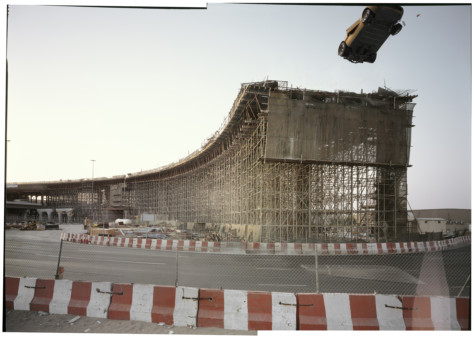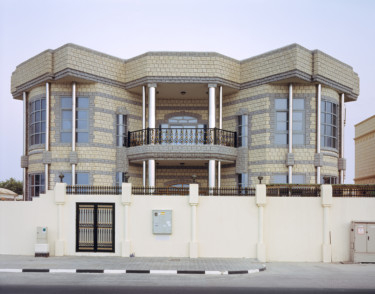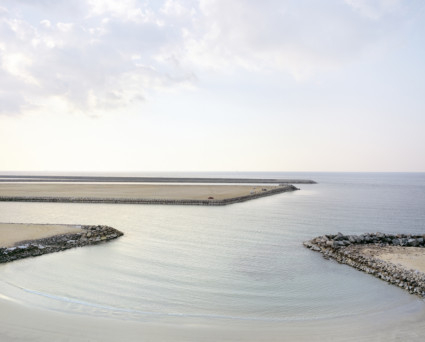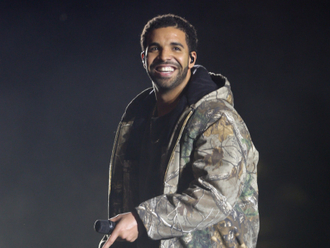
British photographer Richard Allenby-Pratt worked in Dubai in the advertising sector for 16 years before moving back to the UK recently. During this period, he travelled across the UAE documenting the landscape and the dramatic changes in the natural environment caused by the rapid development that has taken place in the country since the discovery of oil.
The artist is back in Dubai to present an exhibition, “The Anthropocene”, featuring several photographic series that he created during his exploration of the rich natural ecology of the UAE. His photographs show the grandeur of the desert and the mountains, while also highlighting their fragility, and the ease with which the natural balance can be destroyed.
In a chat with Weekend Review, Allenby-Pratt spoke about his work and his concerns regarding the environment. Excerpts:
Why did you choose the title “The Anthropocene” for this show?
Anthropocene is a recent geological designation to describe the epoch of man. Scientists have proposed this because since the start of the industrial revolution some 200 years ago, the human impact on the planet has been such that it will be recorded indefinitely in the lithosphere (the Earth’s crust) and the condition of the atmosphere. In ecological terms, as a result of the Anthropocene, the Earth has now entered a period of mass species extinction possibly only matched by the asteroid impact 66 million years ago that changed the earth’s climate and resulted in the extinction of 75 per cent of species on the planet.
But I wonder whether this era of man will even be long enough to be designated an epoch; and I am concerned about what kind of world I am leaving behind for my child, and whether we will have sufficient resources to support the next generation. This is what spurred me to start doing personal photography projects related to issues of sustainability and the environment. Although my photographs were shot in the UAE, the issues they address are global.
What is the “Consumption” series about?
This series looks at the way the natural landscape is being consumed by development. It includes pictures of quarries where gravel is being taken to make concrete, so in a way the mountains are being transported to the coast and repurposed into skyscrapers in the city. There are also images of large channels that have been cut into the coastline to remodel the natural coastal belt; and of massive tyre dumps in the desert.
I also have photographs of the mangrove plantations that are being planted to reduce the carbon footprint resulting from the massive development in the country. I did a lot of research to find these areas and photograph these anthropomorphic landscapes, which are remnants of natural landscapes changed by man. The series documents how the surprisingly rich natural ecology of the UAE has been steadily marginalised into small conservation areas and visitor attractions.
How is your new series, “Vertigo”, related to this issue?
This project, which I started last year, was inspired by seeing a video of young Russians, who break into tall buildings, climb to the top and film themselves walking along the edge. I thought that these kids could do this only if they lacked the imagination to see themselves splattered on the pavement below. This attitude is typical of youth, but we see the same short sighted approach in economic policies around the globe.
We are obsessed with growth, which is not sustainable, and we are involved in enjoying the moment without thinking about the consequences of our actions. The images in this series deal with vertigo, which is the feeling of falling, showing people who seek out this sensation.
What is the idea behind the imaginary scenarios you created in the “Abandoned” series?
I started working on that series just after the global financial crisis happened. There were many abandoned construction sites all around Dubai that had an eerie, post-apocalyptic feel. I tried to imagine a future when the city is abandoned and populated only by wild animals from the zoo, and tigers and other exotic pets from private menageries.
My images show zebras and antelopes grazing at construction sites and crocodiles in the creek. The series speaks about the resilience of natural ecology, and the way we keep challenging it to survive despite the dramatic impact of our actions.
What is the connection between the “The Villas” and “The Zoo” series?
I began “The Villas” series soon after arriving in Dubai because I was, and still am amazed at the residential architecture we see in the UAE. The fancy villas express the ambitions and desires of people, who want so much, without any consideration for the limited resources of the planet.I wanted to document these villas because perhaps in the future this sort of architecture will represent a particular time in history.
The Zoo is a series of pictures taken in the old Dubai zoo, a very small and tragic facility that is thankfully going to close soon. It talks about the attitude of people who want big villas for themselves, while confining animals in small, depressing spaces; and it highlights how the natural ecology is being steadily marginalised into smaller and smaller spaces.
What does the “Sabkha” series convey?
Sabkha, in the western region of the country, is a distinct coastal landscape of salt plains, where the salt content is so high that no plant or animal life can survive there. In a way, this area offers an apocalyptic vision of what the world might look like if we allow the natural ecology to collapse by changing the fine balance of nature and its interconnected, interdependent network of organisms.
The show will run at Gulf Photo Plus in Alserkal Avenue, Al Quoz until December 31














